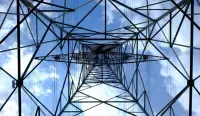Massachusetts Power Hit by Volt Typhoon
In a troubling development for US national security, the electric grid has been compromised in a prolonged attack lasting over 300 days. The attack was conducted by the Voltzite subgroup of the Chinese advanced persistent threat (APT) hacking collective.

US Electric Grid Compromised in Prolonged Attack by Chinese APT Subgroup Voltzite
In a troubling development for US national security, the electric grid has been compromised in a prolonged attack lasting over 300 days. The attack was conducted by the Voltzite subgroup of the Chinese advanced persistent threat (APT) hacking collective.
This is the first known instance of a successful compromise of the US electric grid by a Chinese APT group, and it highlights the growing cybersecurity threats facing critical infrastructure. The attack was first detected in May 2021, and it is believed that the Voltzite group gained access to the electric grid's operational technology (OT) infrastructure through spear-phishing emails targeting employees of the affected organizations. OT refers to the hardware and software systems used to manage and control physical equipment and processes in critical infrastructure sectors such as energy, manufacturing, and transportation.
Once inside the network, the Voltzite group spent several months mapping out the electric grid's OT infrastructure and identifying key assets to target. In December 2021, the group attempted to exfiltrate sensitive data related to the electric grid's OT systems. The data included information about the configuration, operation, and maintenance of critical equipment, as well as network architecture diagrams and other technical specifications.
The US government has not yet attributed the attack to a specific Chinese state-sponsored group or entity, but private sector cybersecurity firms have identified Voltzite as a subgroup of the larger APT10 hacking collective, which is believed to be linked to the Chinese Ministry of State Security (MSS). The MSS is responsible for intelligence collection, counterintelligence, and political security. The compromise of the US electric grid highlights the growing threat posed by state-sponsored cyber espionage and sabotage against critical infrastructure. In recent years, there have been numerous reports of Chinese hacking groups targeting critical infrastructure sectors in the US and other countries.
These attacks often involve sophisticated techniques such as spear-phishing, social engineering, and zero-day exploits to gain access to sensitive systems and networks. The electric grid is particularly vulnerable to cyber attacks due to its complex and interconnected nature. The grid relies on a vast network of sensors, control systems, and communication protocols to manage the flow of electricity from power plants to consumers. A successful attack on the electric grid could cause widespread outages, disrupt essential services, and even pose a threat to public safety.
The US government has taken steps to improve the cybersecurity of critical infrastructure sectors in recent years, but many experts argue that more needs to be done to address the growing threat from state-sponsored hacking groups. The compromise of the electric grid underscores the need for increased vigilance and investment in cybersecurity measures to protect against these threats. In response to the attack, the US government has issued a warning to critical infrastructure operators to be on high alert for any signs of suspicious activity related to OT systems.
The Department of Energy (DOE) is also working with affected organizations to assess the damage and mitigate any further risks to the electric grid. However, some experts are skeptical of the federal government's ability to effectively address these threats. They argue that the US government's response to cyber attacks has been hampered by a lack of coordination and information sharing between different agencies and sectors.
In addition, many organizations remain unprepared for the sophisticated tactics used by state-sponsored hacking groups. As the threat from state-sponsored cyber espionage and sabotage continues to evolve, it is essential that critical infrastructure operators take a proactive approach to securing their OT systems. This includes implementing robust security measures such as multi-factor authentication, network segmentation, and regular software updates. It also requires ongoing education and training for employees to help them identify and respond to potential threats.
In the face of growing cybersecurity threats, it is clear that the US electric grid and other critical infrastructure sectors must take every possible step to protect against these risks. While federal authorities have a role to play in addressing these threats, ultimately it is up to individual organizations to ensure the security and resilience of their OT systems.




